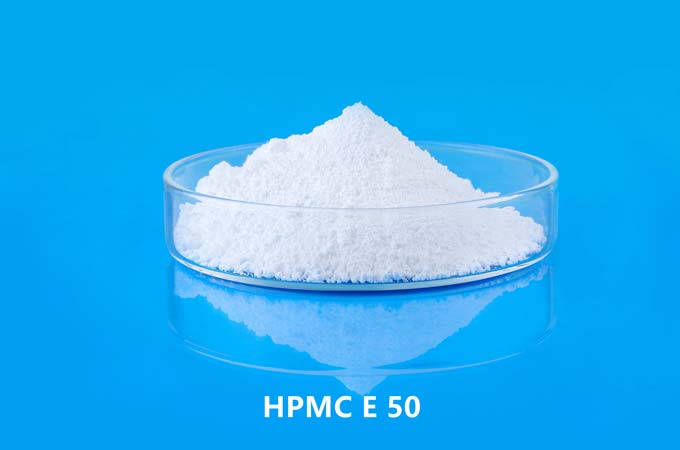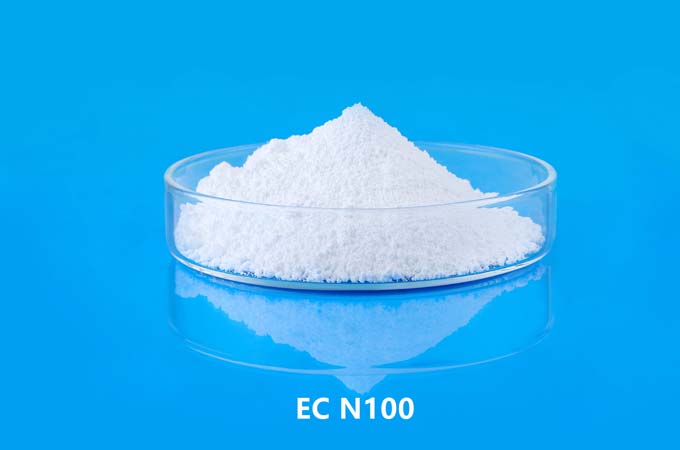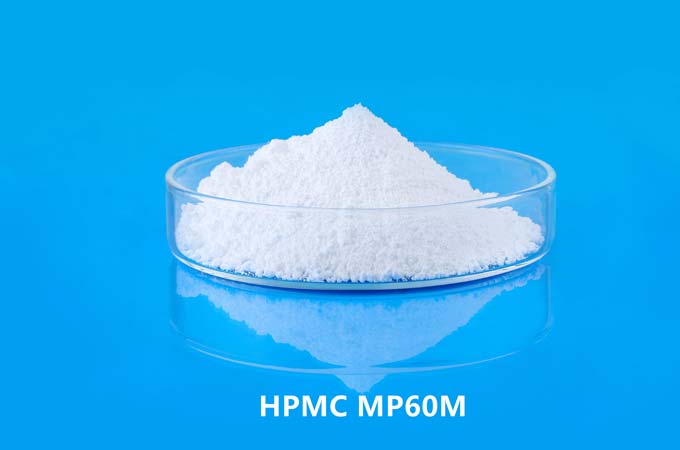What is Methylcellulose (MC)?
cas: 9004 67 5
After the refined cotton is treated with alkali, cellulose ether is produced through a series of reactions with methane chloride as etherification agent. Generally, the degree of substitution is 1.6~2.0, and the solubility is also different with different degrees of substitution. It belongs to non-ionic cellulose ether.
(1) Methylcellulose is soluble in cold water, and it will be difficult to dissolve in hot water. Its aqueous solution is very stable in the range of pH=3~12. It has good compatibility with starch, guar gum, etc. and many surfactants. When the temperature reaches the gelation temperature, gelation occurs.
(2) The water retention of methyl cellulose depends on its addition amount, viscosity, particle fineness and dissolution rate. Generally, if the addition amount is large, the fineness is small, and the viscosity is large, the water retention rate is high. Among them, the amount of addition has a great influence on the water retention rate, and the level of viscosity is not directly proportional to the level of water retention rate. The dissolution rate mainly depends on the degree of surface modification of cellulose particles and particle fineness. Among the above cellulose ethers, methyl cellulose and hydroxypropyl methyl cellulose have higher water retention rates.
(3) Changes in temperature will seriously affect the water retention rate of methyl cellulose. Generally, the higher the temperature, the worse the water retention. If the mortar temperature exceeds 40°C, the water retention of methyl cellulose will be significantly reduced, seriously affecting the construction of the mortar.
(4) Methyl cellulose has a significant effect on the construction and adhesion of mortar. The "adhesion" here refers to the adhesive force felt between the worker's applicator tool and the wall substrate, that is, the shear resistance of the mortar. The adhesiveness is high, the shear resistance of the mortar is large, and the strength required by the workers in the process of use is also large, and the construction performance of the mortar is poor. Methyl cellulose adhesion is at a moderate level in cellulose ether products.
What is Hydroxypropylmethylcellulose (HPMC)?
cas: 9004 65 3
Hydroxypropyl methylcellulose is a cellulose variety whose output and consumption have been increasing rapidly in recent years. It is a non-ionic cellulose mixed ether made from refined cotton after alkalization, using propylene oxide and methyl chloride as etherification agent, through a series of reactions. The degree of substitution is generally 1.2~2.0. Its properties are different due to the different ratios of methoxyl content and hydroxypropyl content.
(1) Hydroxypropyl methylcellulose is easily soluble in cold water, but it will encounter difficulties in dissolving in hot water. But its gelation temperature in hot water is significantly higher than that of methyl cellulose. The solubility in cold water is also greatly improved compared with methyl cellulose.
(2) The viscosity of hydroxypropyl methylcellulose is related to its molecular weight, and the larger the molecular weight, the higher the viscosity. Temperature also affects its viscosity, as temperature increases, viscosity decreases. However, its high viscosity has a lower temperature effect than methyl cellulose. Its solution is stable when stored at room temperature.
(3) The water retention of hydroxypropyl methylcellulose depends on its addition amount, viscosity, etc., and its water retention rate under the same addition amount is higher than that of methyl cellulose.
(4) Hydroxypropyl methylcellulose is stable to acid and alkali, and its aqueous solution is very stable in the range of pH=2~12. Caustic soda and lime water have little effect on its performance, but alkali can speed up its dissolution and increase its viscosity. Hydroxypropyl methylcellulose is stable to common salts, but when the concentration of salt solution is high, the viscosity of hydroxypropyl methylcellulose solution tends to increase.
(5) Hydroxypropyl methylcellulose can be mixed with water-soluble polymers to form a uniform and higher viscosity solution. Such as polyvinyl alcohol, starch ether, vegetable gum, etc.
(6) Hydroxypropyl methylcellulose has better enzyme resistance than methylcellulose, and its solution is less likely to be degraded by enzymes than methylcellulose. The adhesion of hydroxypropyl methylcellulose to mortar construction is higher than that of methylcellulose.
What is Hydroxyethyl Cellulose (HEC)?
cas: 9004 62 0
It is made by treating refined cotton with alkali, then reacting with ethylene oxide as etherification agent in the presence of acetone. The degree of substitution is generally 1.5~2.0. It has strong hydrophilicity and is easy to absorb moisture.
(1) Hydroxyethyl cellulose is soluble in cold water, but it is difficult to dissolve in hot water. Its solution is stable at high temperature without gelling. It can be used for a long time under high temperature in mortar, but its water retention is lower than that of methyl cellulose.
(2) Hydroxyethyl cellulose is stable to general acid and alkali. Alkali can accelerate its dissolution and slightly increase its viscosity. Its dispersibility in water is slightly worse than that of methyl cellulose and hydroxypropyl methyl cellulose.
(3) Hydroxyethyl cellulose has good anti-sag performance for mortar, but it has a longer retarding time for cement.
(4) The performance of hydroxyethyl cellulose produced by some domestic enterprises is obviously lower than that of methyl cellulose due to its high water content and high ash content.
What is Carboxymethylcellulose (CMC)?
cas: 9004 32 4
Ionic cellulose ether is made from natural fibers (cotton, etc.) which are treated with alkali and used as etherification agent through a series of reaction treatments. The degree of substitution is generally 0.4~1.4, and its performance is greatly affected by the degree of substitution.
(1) Carboxymethyl cellulose is highly hygroscopic, and it will contain relatively large amounts of water when stored under normal conditions.
(2) Carboxymethyl cellulose aqueous solution will not produce gel, and the viscosity will decrease with the increase of temperature. When the temperature exceeds 50℃, the viscosity is irreversible.
(3) Its stability is greatly affected by pH. Generally, it can be used in gypsum-based mortar, but not in cement-based mortar. When highly alkaline, it loses viscosity.
(4) Its water retention is far lower than that of methyl cellulose. It has a retarding effect on gypsum-based mortar and reduces its strength. However, the price of carboxymethyl cellulose is significantly lower than that of methyl cellulose
Difference Between HPMC And CMC
HPMC and CMC are two types of cellulose derivatives commonly used in various industries, including pharmaceuticals, food, cosmetics, and construction. While they share some similarities, there are distinct differences between HPMC (Hydroxypropyl Methylcellulose) and CMC (Carboxymethyl Cellulose) in terms of their chemical structure, properties, and applications. Let's explore these differences in more detail:
HPMC: HPMC is a semisynthetic polymer derived from cellulose. It is created by chemically modifying cellulose through the addition of hydroxypropyl and methyl groups. This modification enhances the water retention and thickening properties of cellulose.
CMC: CMC is also a semisynthetic polymer derived from cellulose. It is produced by chemically modifying cellulose through the addition of carboxymethyl groups. This modification imparts solubility in water and improves its binding, thickening, and stabilizing properties.
HPMC: HPMC is not readily soluble in water but can swell and disperse in water to form a viscous solution or gel. The degree of solubility depends on the viscosity grade of HPMC and the temperature of the water.
CMC: CMC is highly soluble in water and forms a clear and viscous solution. It has excellent water retention and binding properties, making it suitable for applications that require thickening or stabilization.
HPMC: HPMC exhibits good thermal stability, meaning it can withstand high temperatures without significant degradation. This property makes it suitable for applications where heat resistance is required.
CMC: CMC also demonstrates good thermal stability and can tolerate moderate temperatures without notable degradation. However, it may exhibit some sensitivity to prolonged exposure to higher temperatures.
HPMC: HPMC is available in various viscosity grades, ranging from low to high viscosity. These different grades offer a range of thickness and water-holding capabilities, allowing for precise control over the rheological properties of formulations.
CMC: CMC is also available in different viscosity grades, providing a wide range of thickening capabilities. It can form stable and uniform suspensions, making it ideal for applications requiring viscosity control and stabilization.
HPMC: HPMC finds applications in various industries, including pharmaceuticals (tablet coatings, controlled release formulations), personal care products (lotions, creams, shampoos), construction (mortars, cement-based products), and food (emulsifiers, stabilizers).
CMC: CMC is widely used in industries such as food (thickeners, stabilizers, dietary fiber), pharmaceuticals (binding agents, viscosity modifiers), personal care products (toothpaste, creams, gels), and oil drilling (fluid viscosity control).
In summary, while both HPMC and CMC are cellulose derivatives, they differ in terms of their chemical structure, water solubility, thermal stability, viscosity characteristics, and applications. Understanding these differences is crucial for selecting the appropriate cellulose derivative for a specific application in industries ranging from pharmaceuticals and personal care to food and construction.
 English
English 日本語
日本語 français
français Deutsch
Deutsch Español
Español italiano
italiano русский
русский português
português العربية
العربية Türkçe
Türkçe Nederland
Nederland



